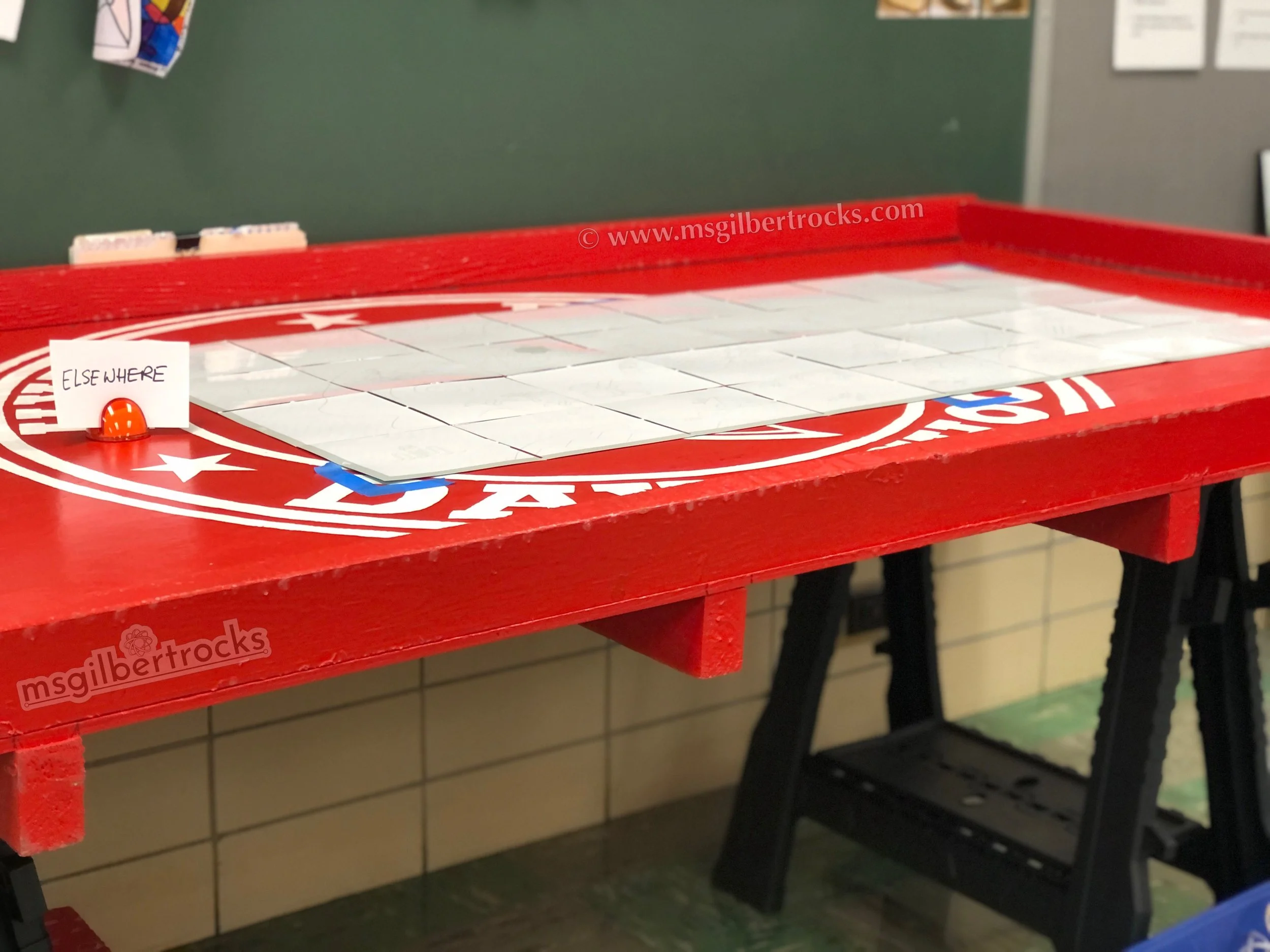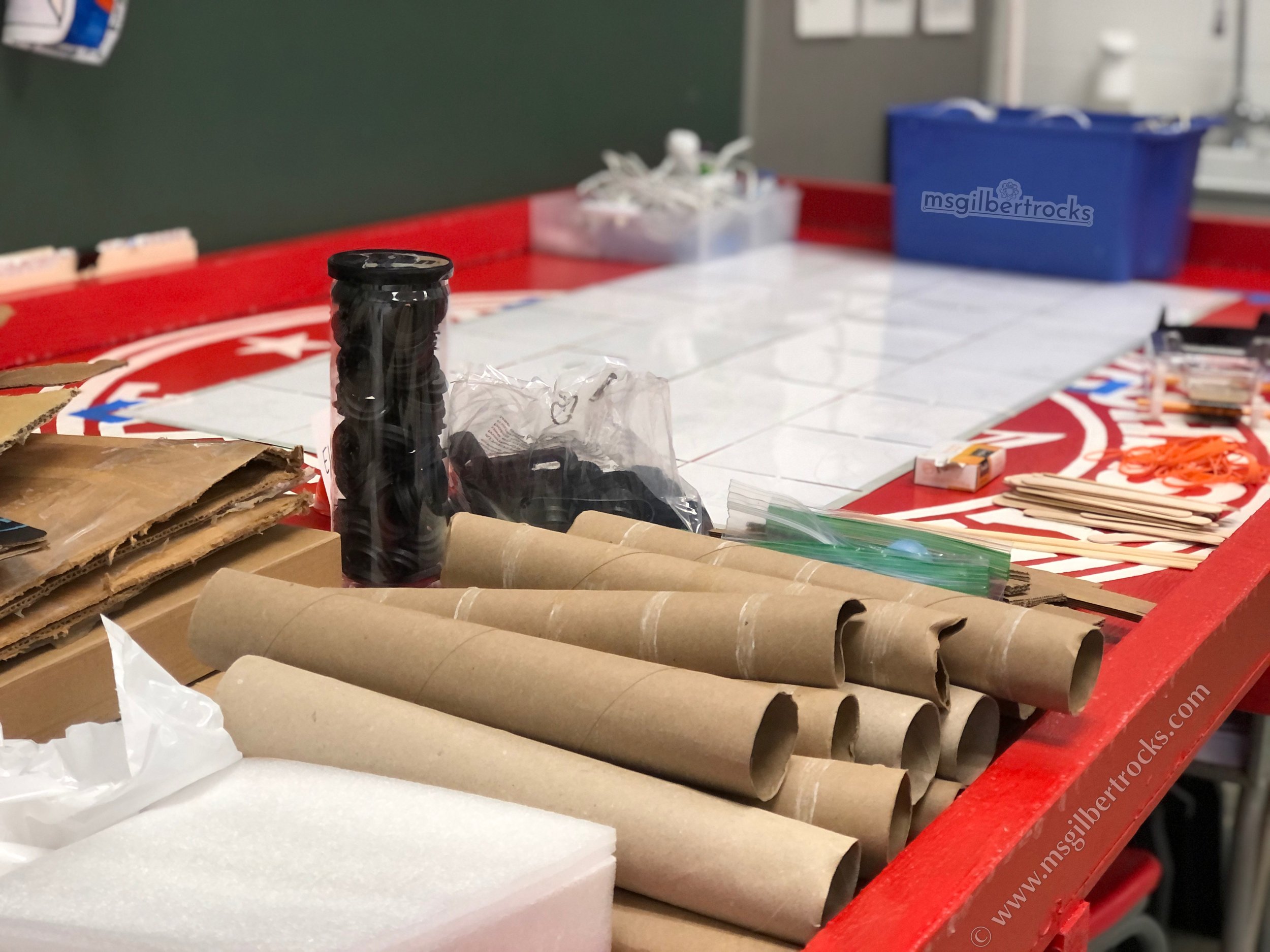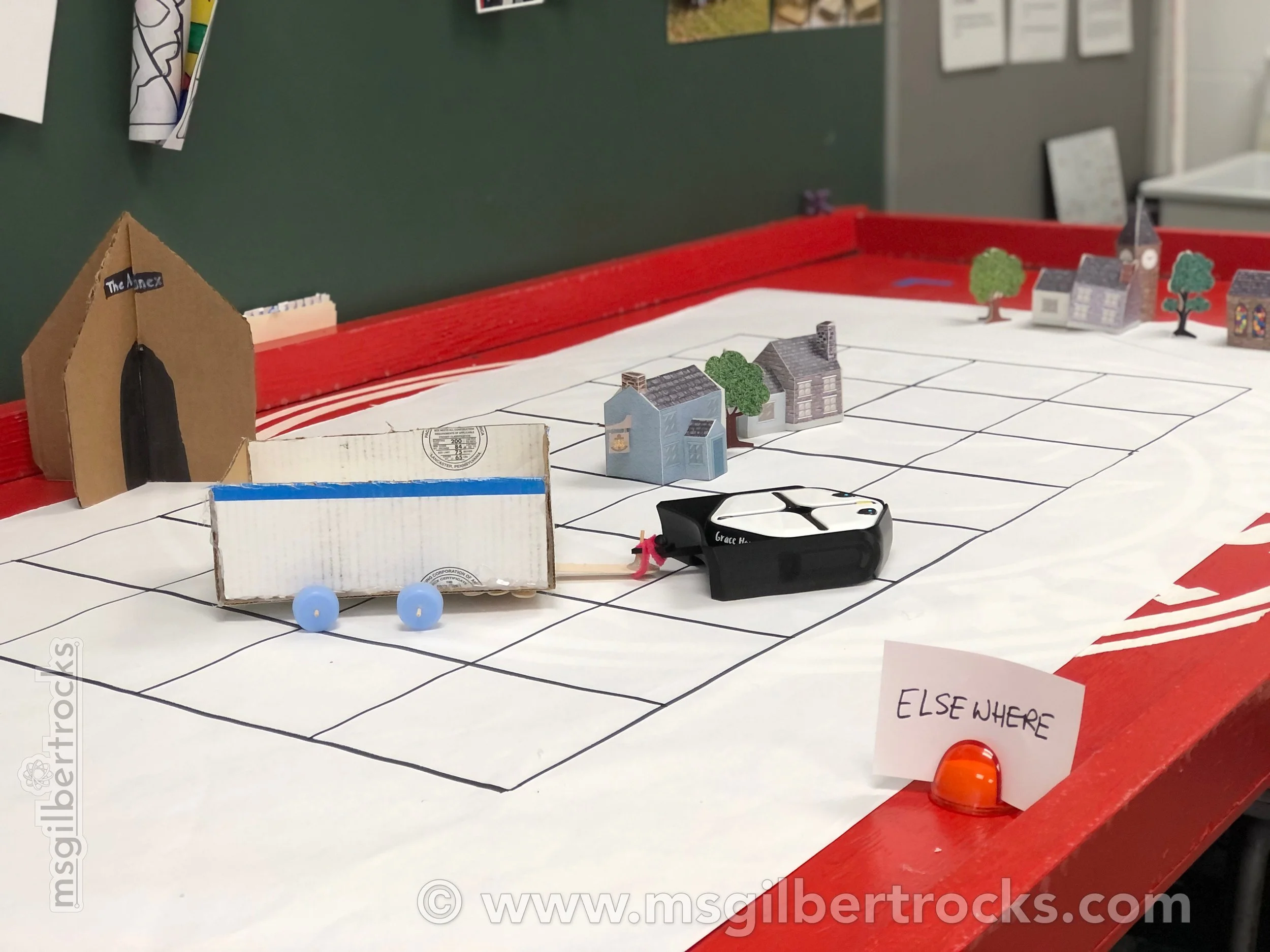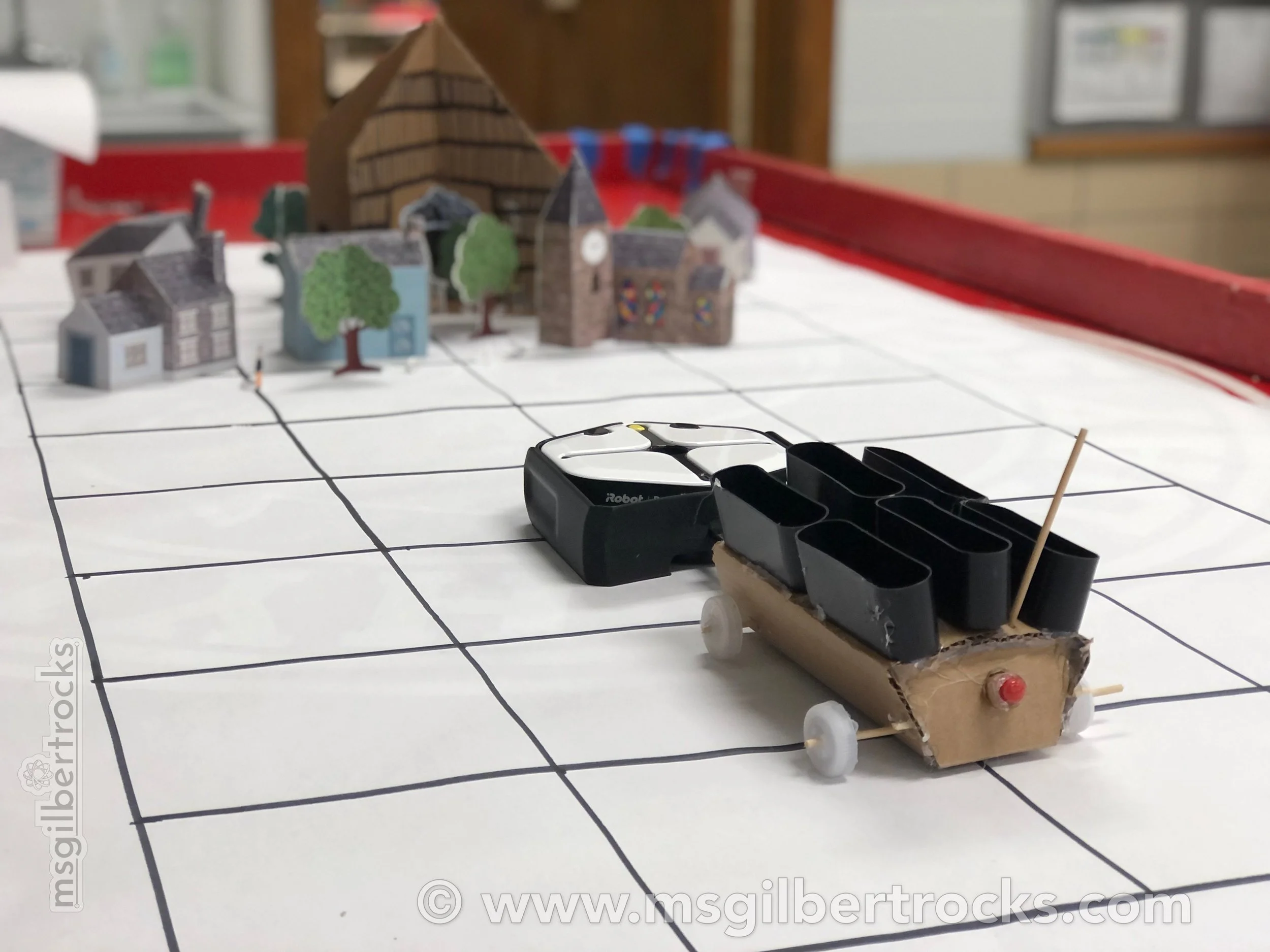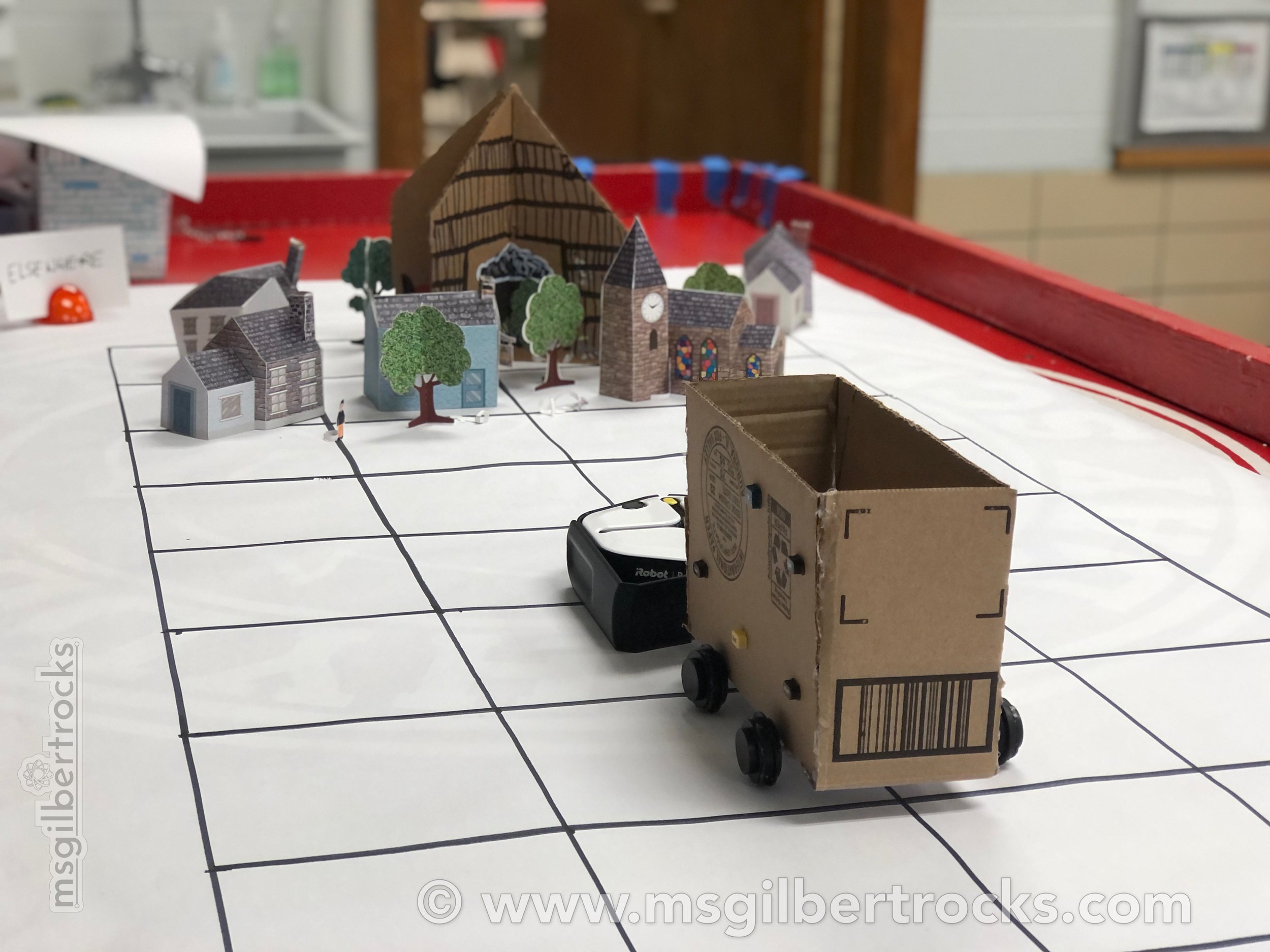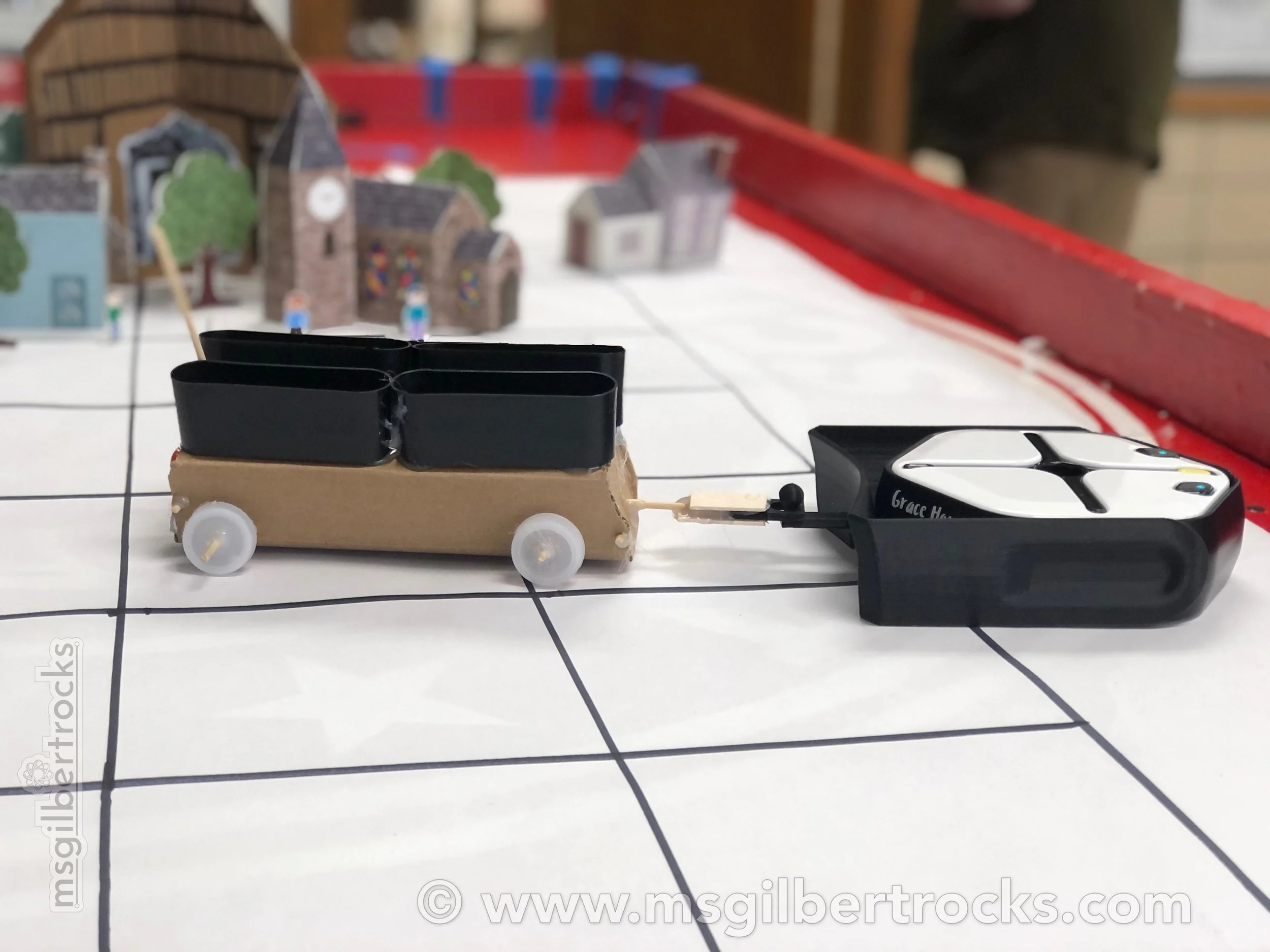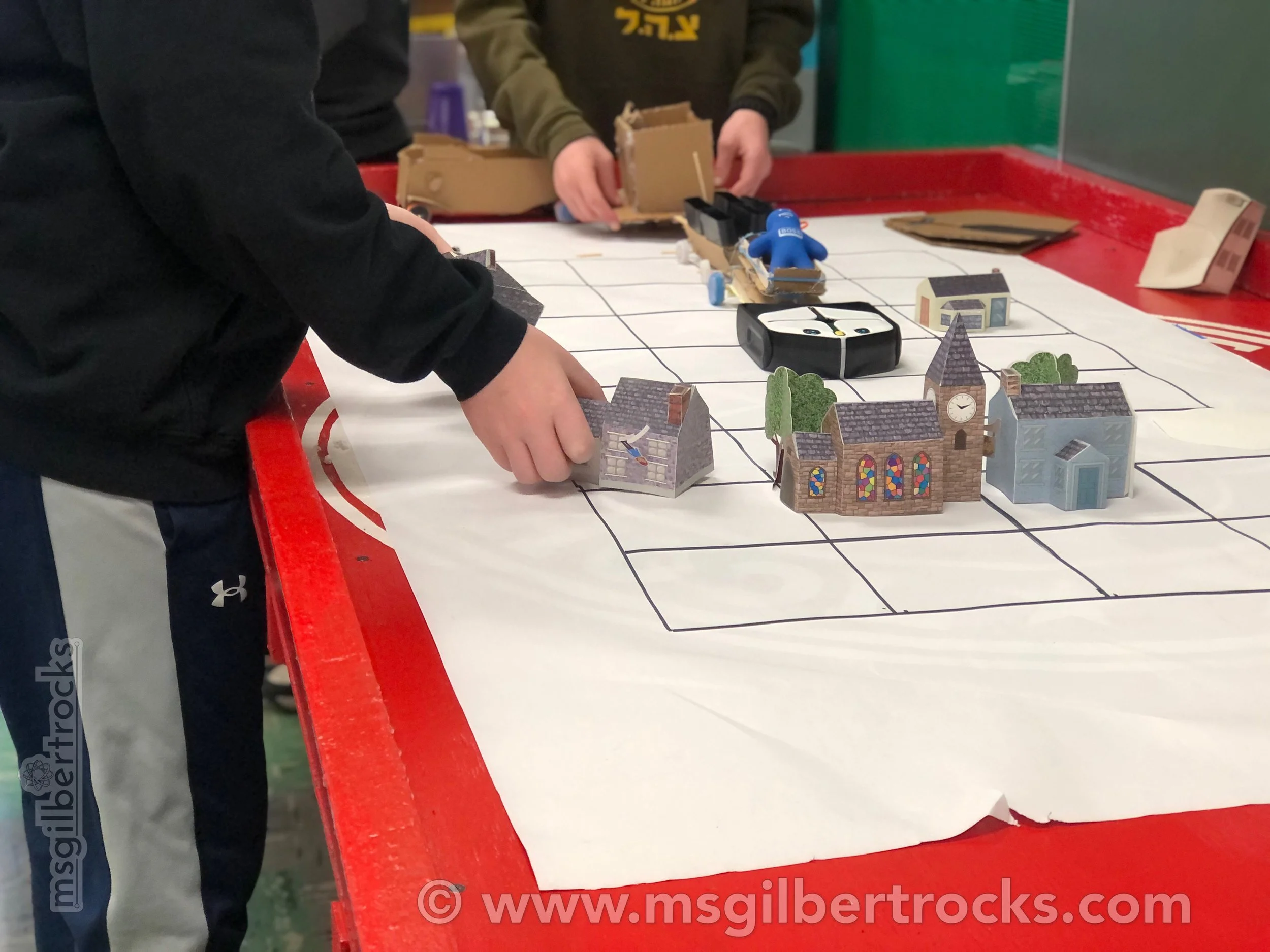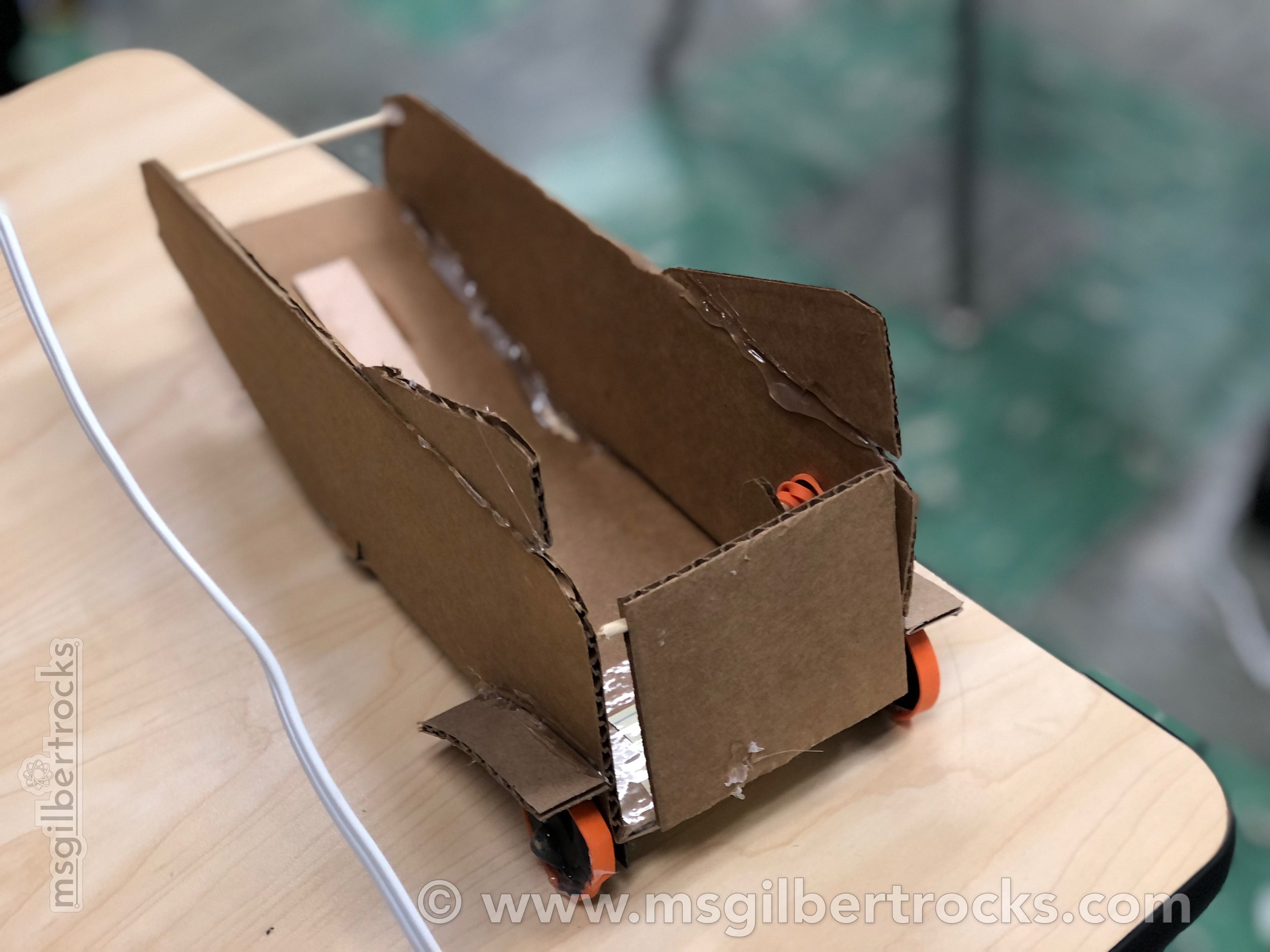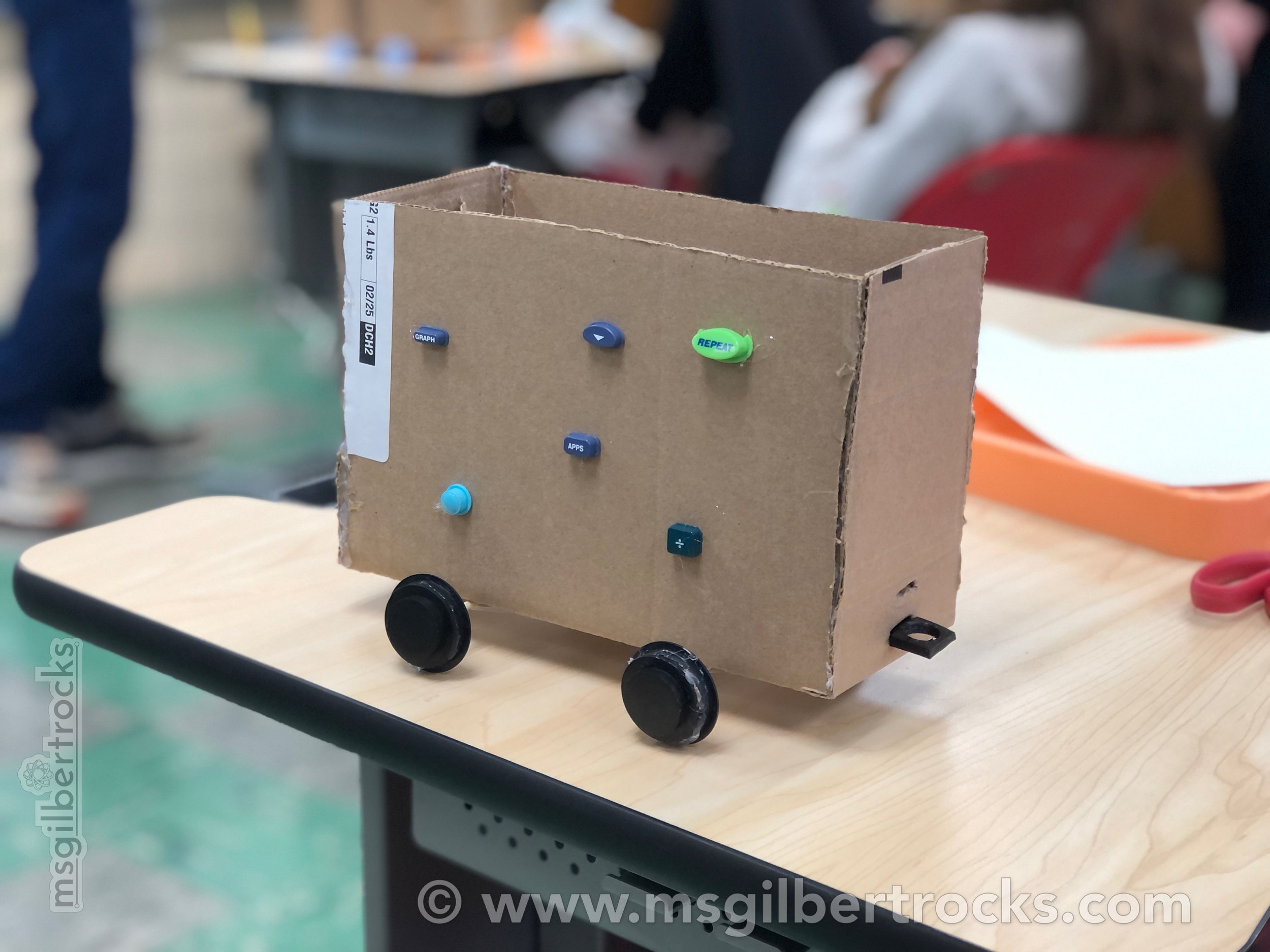Mission: Transport with Root
MarGilly, the collaborative duo of Maggie Lu and Jen Gilbert, is excited to share this fun and engaging activity that combines literature, technology, and engineering in a unique way as Mission: Transport with Root. Our combined reading/language arts classes had the pleasure of engaging in novel study throughout the year for several different novels as a book club group. This allowed the kids to practice a variety of skills related to participation/discussion and gave them a larger group to collaborate with when it came to final projects like this one described here.
As part of a final project for The Giver, our students used iRobot’s Root Robot and their coding application to create a transportation system that connects different locations in the fictional community. Using the drag-and-drop block coding interface, students programmed Root to navigate around a mat that represented the community, avoid obstacles, and pick up and deliver “goods” to designated locations. This project aligns with the principles of Novel Engineering (from Tufts University), a framework that promotes using literature and engineering design to teach engineering concepts.
Process
Students were tasked with creating the transport trailer from recyclable/craft materials and hot glue (if you’re keeping track…yes, we went through a lot of hot glue this year!). We provided an example to show how something could be attached and roll. The example (shown here) is one that was originally used as a trailer attachment for a Bee-Bot robot many years ago. Sometimes it helps to save a sample or two for visuals! As an added bonus we had students pick some embellishments from our take-apart area where various buttons and pieces are set aside from any technology take-apart projects completed throughout the year. This gives an additional bit of flair to what the students create and allows us to upcycle pieces. You can see a variety of buttons or other components (like a speaker!) that were worked into the student projects in the photos shared below.
Getting Started
iRobot provides several STL files for 3D models related to the Root Robot. One piece that we have used with great success is the “bulldozer” attachment. This piece is used as-is for the “clear the snow” activity with cotton balls. You can learn about that (and more) in this post about our robots on the website. Jen took the existing STL file and modified it (with permission from iRobot) to include a hitch and created an accessory that could connect to a student-made trailer and the newly added hitch post.
If we have permission to share the file Jen created here, it will be added along with the accessory piece. While the hitch is not a necessary component, we thought it worked well to have that consistent for our groups so there were not several methods to attach to the robot each time someone wanted to test their trailer/transport creation. In other classes, particularly if you have more time, the challenge of attaching to the robot and spending more time on the turning ratios etc., could be a wonderful addition to the engineering side of this project. For us, it was enough of a challenge to place the hitch accessory in such a way that the trailer would still roll, but could stay connected to the hitch/robot for the duration of the run.
Sharing
To document and present their projects, students created a Google Slides presentation that included:
Title slide with their name and a title for the project
A summary of their project, including a paragraph (edited with tools) from their final project document
Picture(s) of the robot with the trailer attached
Screenshots of their code, showing how the robot is programmed to navigate from point A to point B
A video of the robot in action, going from point A to point B
Final Thoughts
One of the great things about this activity is that it allows students to apply the concepts they’ve learned in the novel to a real-world problem-solving scenario, using the engineering design process. They have to think creatively and critically about how to design and code an efficient transportation system, all while considering the limitations of the robot/trailer hitch setup and the needs of the community.
Not only is this activity a fun and interactive way to engage with the material, but it also helps students develop important skills such as problem-solving, coding, and teamwork as well as engineering concepts. Plus, working with a physical robot like Root allows students to see the immediate results of their code and get a better understanding of how technology can be used to solve real-world problems.
If you’re looking for an exciting and unique way to wrap up your unit on The Giver, or any other novel, consider something like Mission: Transport with Root to bring the story to life. Not only will your students have a blast, but they’ll also be learning valuable skills that will prepare them for the future and apply engineering concepts in their learning process.
To get started, check out the coding application on iRobot’s coding website and start experimenting with the different blocks and commands. You can find our version of the activity page here and make your own copy to modify. As always, please share whatever you come up with so we can see how you build on these ideas!
Photos, video snippets and a compilation video of student runs are shared below so you can see things in action. Notice the challenges with turning - if we were to do another version of this type of activity, we would have the kids test more often to get a sense for how the robot navigated the mat with the trailer attached. This was very tricky for the kids and provided some good moments to troubleshoot their path between the two points.



